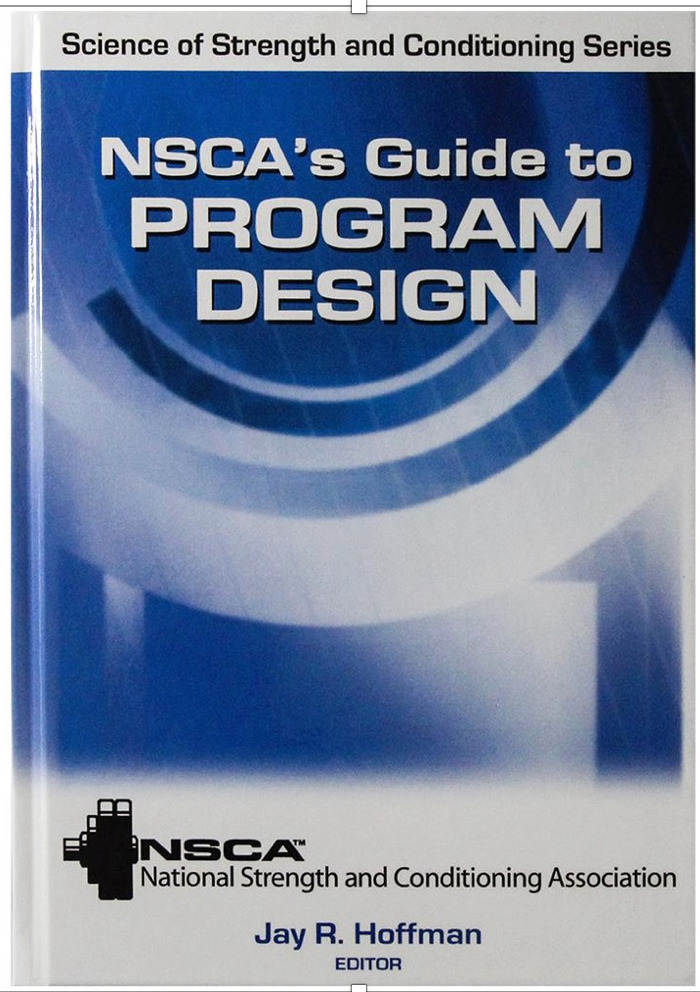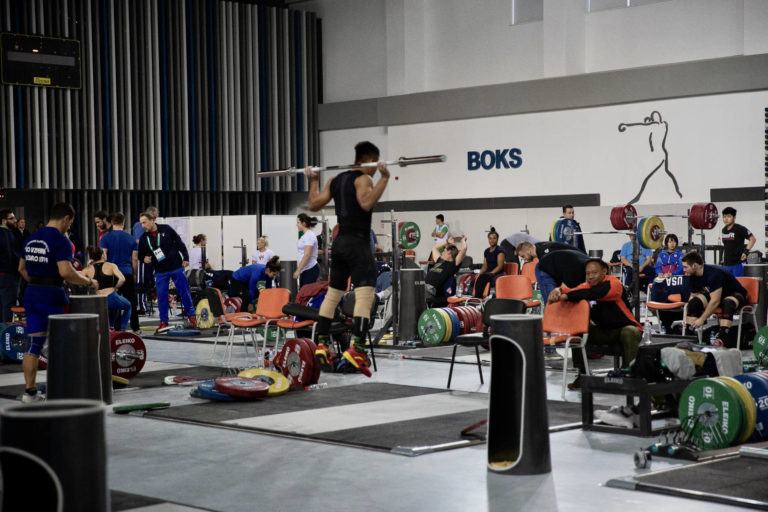Strengh Sensei Bookshelf
NSCA’s Guide to Program Design
Insight into current approaches to writing workouts
One of the essential skills of a strength coach is designing workouts. Charles Poliquin always started his courses discussing loading parameters such as reps, sets, and tempo. This NSCA’s Guide to Program Design is more of a resource for a coach who already understands these basics and is looking to explore mainstream material on training athletes.
Authored by Jay R. Hoffman, this book is a collection of independent articles by many of the most notable sports scientists and today’s athletic fitness experts. The chapters are written independently of one another, such that the reader will have no trouble going directly to the chapter(s) that interest them. Be warned, however, that the reading level varies from simple/practical to hardcore/theory.
If you are interested in learning how to set up dynamic stretching, Chapter 3 is an easy-to-read chapter that discusses the advantages of this type of warm-up and provides photos and descriptions of several exercises. However, if you want an intense discussion about endurance training, sit down in a quiet room with a pot of coffee and enjoy the science provided in Chapter 7.

Because the NSCA has a large percentage of members with college degrees in the fields of exercise science, it’s no surprise that there is a heavy emphasis on athletic assessments and performance testing. Chapters 1 and 2 cover the basics, but you’ll find an emphasis on testing throughout the book. For example, the chapter on agility training begins with several pages on assessing agility and provides norms to help the coach determine which specific agility qualities need extra work.
Although there is a chapter on resistance training and another on power training, these chapters focus more on general guidelines. For example, these two chapters discuss the intensity levels most effective for developing strength and the best exercises (such as the snatch and plyometrics) for developing power. What you won’t find is an extensive review of various set/rep/rest programs that Coach Poliquin has promoted in his writing.

NSCA’s Guide to Program Design contains many chapters that would interest strength coaches, especially regarding research in exercise science. However, other resources should be consulted for those interested in learning how to infer this science into practical application.
“Chapter 14: Training Program Implementation” attempts to bring all the previous chapters together by providing sample workouts for specific sports. However, some of the loading parameters in these workouts don’t seem to follow the recommendations in other chapters. For example, one workout protocol for “strength/power athletes” focuses on 3-4 sets of 6-8 reps for 16 of 19 exercises: squats, 4 x 6-8; high pulls, 4 x 6-8 (which would be a challenge as high pulls are a technically complete exercise); leg curls, 3 x 6-8, and triceps pushdown, 3 x 6-8. The exceptions are hyperextensions (3 x 8-12) and sit-ups and crunches (3 x 20). While such a protocol will make athletes stronger, Coach Poliquin would argue that lower reps and more sets would be more effective for developing maximal strength and power.
Another example is a 15-week periodization program designed for a tennis player. The first five weeks focus on sets of 10-12 reps in the back and front squat. Coach Poliquin endorses the front squat as a valuable exercise for athletes but said that high reps should be avoided. Next, 10-12 reps would be more of a hypertrophy protocol; a tennis player would be more interested in developing relative strength. And except for a beginner, Coach Poliquin would change the loading parameters about every two weeks, not five. As for exercise selection, consider that the program includes standing calf raises but not seated to emphasize the soleus muscle, which would be strongly involved in helping with court movement.
[You can purchase Jay R. Hoffman’s NSCA’s Guide to Program Design from Amazon.com.]
Join the Dojo of Strength, which has monthly programs and articles from Charles Poliquin and our team of coaches.
